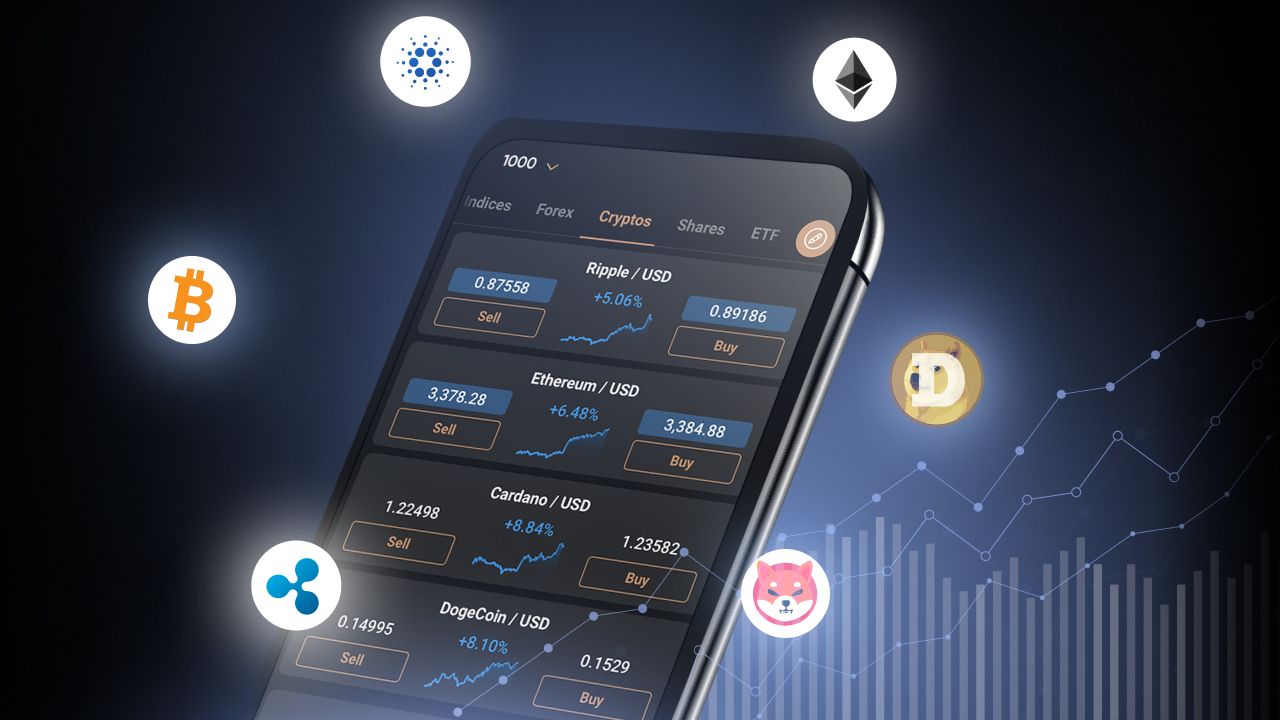If you happen to put $1 beneath your mattress, you realize you’ll get $1 again if you go in search of it. Once you deposit $1 with a financial institution, you may be fairly certain you’ll get it again even when they do extra with it and then lock it in a vault, due to laws developed over centuries. A department of cryptocurrencies known as stablecoins has been attempting to copy that type of dependability in completely new methods. Some have used the equal of a digital vault to again up their guarantees. Others have tried options that are much more complicated. The most important of these, TerraUSD, often known as UST, and its sister token Luna have melted down in spectacular style, sending their costs to close to zero and their market values plunging to a shadow of the mixed $60 billion they as soon as commanded. Its plunge has raised considerations that transcend its slim slice of the stablecoin world.
1. What’s a stablecoin?
A cryptocurrency designed to carry a gentle worth, in sharp distinction to the intense value volatility seen for Bitcoin and different tokens. Stablecoins are supposed to be helpful, to not make their house owners wealthy by hovering in worth. They try this in two methods: by permitting crypto house owners to conduct transactions without having to take volatility into consideration, and by providing them a secure haven for their holdings, shielded from wild swings within the crypto market without having to transform their holdings into conventional cash. The most well-liked stablecoin, Tether, may be exchanged for greater than 4,000 different cryptocurrencies on centralized exchanges, in accordance with crypto knowledge agency Kaiko, making it certainly one of crypto’s most traded tokens.
2. How do they maintain their worth?
They’re usually pegged to different forex: each Tether and UST had been designed to be pegged to the US greenback. They preserve that peg in certainly one of 3 ways. Tether and lots of different of the largest cryptocurrencies preserve a reserve of money or cash-equivalent property whose worth in principle matches the full worth of the stablecoin in circulation. That’s, when a consumer pays Tether $1 for a token, that cash is meant to be held in Tether’s financial institution accounts. Others, like MakerDAO’s DAI, preserve a reserve of cryptocurrencies moderately more than conventional cash, however, they “overcollateralize”—maintain reserves bigger than the face worth of their stablecoins to compensate for their volatility. TerraUSD, nonetheless, took the third route, working as an algorithmic stablecoin.
3. What’s an algorithmic stablecoin?
Its forex is backed by automated operations meant to take care of a stablecoin’s worth by growing or lowering its provide. The thought was to create totally decentralized forex, not in the end backed by a centralized issuer of property just like the US authorities. Algorithmic stablecoins are designed around the truth that stablecoins, like different cryptocurrencies, function on blockchains—digital public ledgers operated by a neighborhood moderately than a financial institution or authorities. Blockchains can include so-called sensible contracts—code that operates mechanically in specified circumstances. The algorithms may be programmed to mechanically create extra items of a stablecoin or destroy present items in response to swings in its provide and demand. When the stablecoin trades above its pegged worth, extra tokens are created and the worth comes down. When the stablecoin trades beneath the peg, extra tokens are taken out of the circulation and the worth comes up. A sister token with an unstable value is often concerned.
4. What was TerraUSD’s mannequin?
TerraUSD was linked to a sister token, Luna, whose value was set by the market. As a result, 1 UST was outlined as being equal to the $1 value of Luna, which meant that whereas the quantity of Luna handed over in a swap for UST would differ, a holder of $1 in UST would at all times get $1 in worth again. That created arbitrage incentives for merchants that had been designed to maintain the worth of UST at or near $1.
5. What else was concerned?
The first problem for all new cryptocurrencies is to create causes for folks to purchase them. Demand may be pushed by the prospect of giant positive aspects if the token catches on or is primed by offering a reward to forex holders. Within the case of TerraUSD, the primary attraction concerned Anchor, a lending venture based mostly on Terra blockchain that promised rates of interest as excessive as 20% for UST deposits, a suggestion that led to UST’s explosive development. As Terra grew greater, a corporation known as Luna Basis Guard (LFG) was launched by Terra’s primary developer, Do Kwon, to build up reserves to provide UST with one other type of backing. Kwon advised Bloomberg Information in March 2022 that having a third-party asset to fulfill “short-term” demand in the redemption of UST can be “precious” for Terra’s algorithmic stablecoin system. The foreign exchange reserve initially solely contained Bitcoin and LFG promised to purchase as a lot as $10 billion value of Bitcoin. About $100 million value of Avalanche, one other cryptocurrency, was later added to the reserve in April. It was a step that did little to placate Terra’s many critics.
6. What did the critics say?
Some are known as UST a brand new type of Ponzi scheme. Others extra politely mentioned that Terra’s enterprise mannequin had a vulnerability at its coronary heart: that UST’s peg to Luna and not using a peg to the rest would solely work if folks believed that they might preserve their worth and that they might solely preserve their worth if increasingly more folks purchased them. For the reason that the primary attraction was the excessive returns for depositing UST on Anchor—which in flip was being sponsored by buyers in Terra—that didn’t seem to be a sustainable enterprise. Between the tip of April and the collapse of Luna, Anchor burned almost $100 million value of UST in its reserve to maintain up with the demand for top yields. To the critics, LFG’s creation of a crypto reserve was a doomed try to make use of a few of the Ponzi-like earnings of UST to create an extra typical backing for the forex. If demand for both UST and Luna fell, they mentioned, the worth of each might evaporate in what’s referred to as a “demise spiral.”
7. What occurred?
A demise spiral. It’s not clear what set off the preliminary drop in demand for UST, although Anchor had dropped its yields from 20% to 18% on Could 2. A couple of days later, a considerable amount of UST was withdrawn from the decentralized change Curve Finance. Kwon mentioned on Twitter that his agency Terraform Labs had withdrawn $150 million UST from Curve to organize for a brand new “liquidity pool” that may go reside on the change, however, at roughly the identical time, an unknown consumer exchanged roughly $84 million value of UST for forex referred to as USD Coin via Curve. These massive strikes, following on the heels of the rate of interest minimization, led extra UST depositors to withdraw their stablecoins from Anchor, a flood of transactions that knocked UST off of its $1 peg. Within the crypto equal of a financial institution run, that led extra UST holders to attempt to get their cash out. However, since one of many primary methods to exit from UST was via Luna, which was already falling in worth as a result of buyers’ lack of confidence in addition to a total down market, that solely worsened the scenario. The UST-Luna change mechanism meant that the huge UST withdrawals led to an enormous growth within the provide of Luna, driving down its worth even additional.
8. What did Terra do?
In response to tweets from LFG’s official Twitter account, it spent nearly all of its Bitcoin reserves in an try to save lots of UST’s peg by totally different buying and selling methods together with promoting Bitcoin for UST. As of Could 16, its reserve had dropped from greater than 80,000 Bitcoin to only 313. That day, Kwon gave up on saving the stablecoin however proposed preserving the Terra blockchain as a brand new entity that may solely use Luna tokens.
9. What does this imply for stablecoins?
Regulators had already been involved with stablecoins as a supply of danger within the monetary system due to their use in leveraged transactions and the way in which they’re used to work together with conventional monetary establishments. In a report issued by Could 9, the US Federal Reserve mentioned stablecoins had been “weak to runs” and lacked transparency about their property. US Treasury Secretary Janet Yellen mentioned lately that Terra’s meltdown underscores the pressing want for guardrails and mentioned it could be “extremely applicable” for lawmakers to enact laws as quickly as this 12 months.
The Reference Shelf
- A Bloomberg Information profile of Do Kwon, described by his followers because of the “King of the Lunatics.”
- A Bloomberg Information article described the start of the tip for UST.
- A Bloomberg Opinion column by Matt Levine analyzed the meltdown.
- Two economists at VoxEU analyze algorithmic stablecoins.





